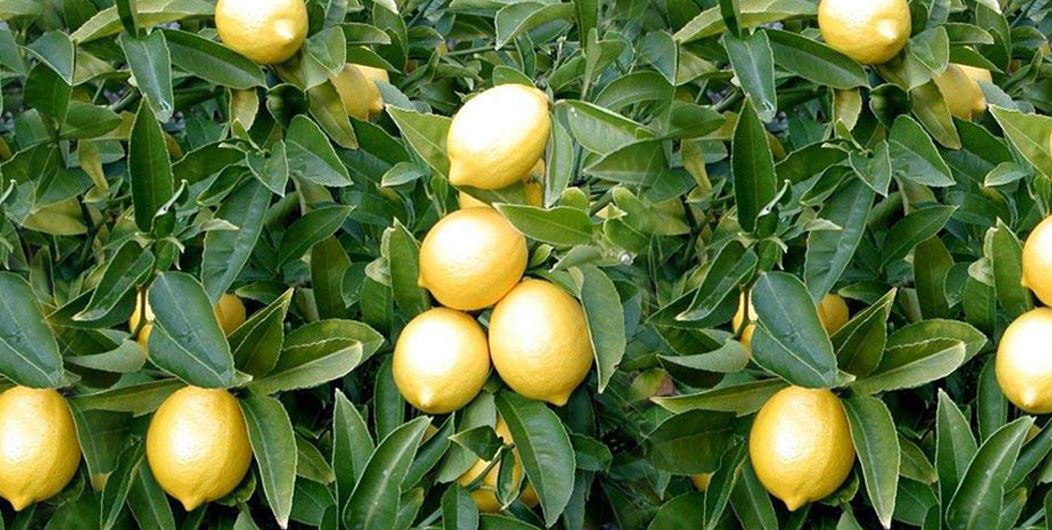
| Banana | Citrus | Mango |
| Watermelon | Mongoosteen |
As Sri Lankans, we are blessed with some of the flavourful tropical fruit varieties to exist in the Eastern hemisphere. Roadside fruit stalls with neatly stacked piles of dark-purple mangosteens and bunches of saffron-hued bananas hanging from a rafter is a familiar sight to us locals. Nurtured by ideal agro-climate conditions and generations of horticultural knowledge, these fruits are of premium quality. What is more, as exotic fruits from the tropics, they contain unparallel medicinal and nutritional value and can work wonders for your health. And the good news is, most tropical fruit varieties from Sri Lanka are exported to global markets!
Here is a glance at some of the most widely sought-after fruit varieties from Sri Lanka.
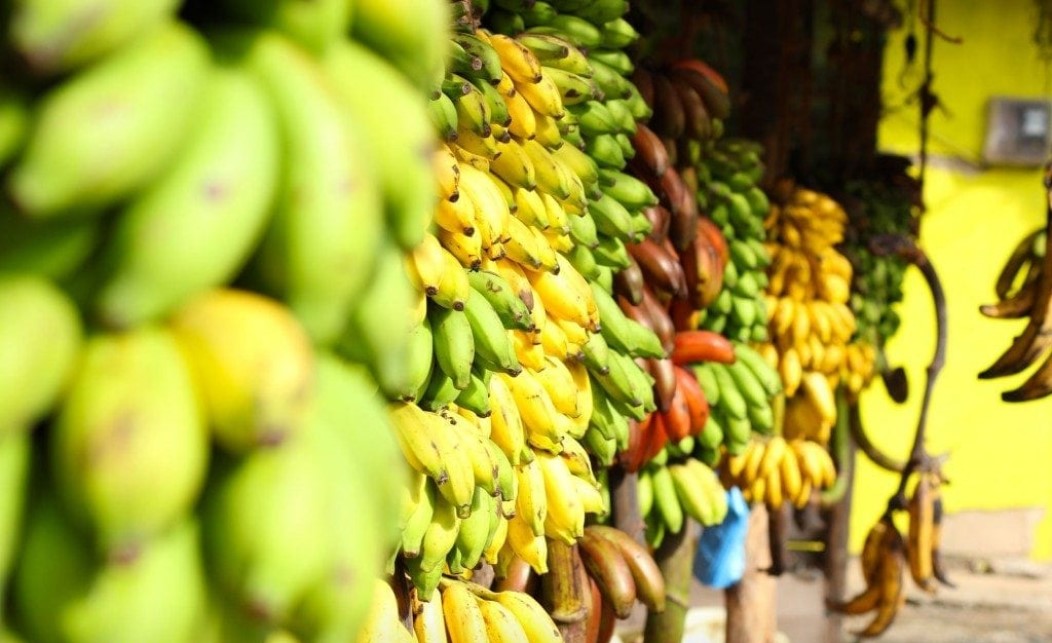
The fifth agricultural food crop in the world, Banana is grown in over 130 countries including tropical and subtropical countries like Sri Lanka (1). Locally, banana is the most widely cultivated fruit with nearly 60,000 hectares of land used for cultivation, representing 54% of the total fruit cultivation land of the country. However, though banana is the most widely cultivated fruit, it is primarily cultivated on small subsistence farms of plots of less than 0.25 ha and they produce around 780,000 metric tons of banana per year. About 5% of the total annual banana production is exported (2).
In Sri Lanka, 29 banana cultivars and two wild species have been reported and five of them are cooking types. The rest of the species (3)except for two wild types are dessert type banana species (1). Sri Lanka's most popular banana varieties include Seeni Parakum, Kandula, Ambul Nadee, Nethra Palam, Ambum, Kolikuttu, Seeni, Aanamalu, and Rath Kesel. While bananas are commercially produced on farms, many locals grow banana trees in their home gardens for personal consumption as well. Banana is such a staple fruit in Sri Lanka that ripe yellow combs of banana are a mandatory sight at every home gathering.
Certain varieties of bananas are cooked as a vegetable whereas most of the other varieties are consumed as fruit. The cooking banana varieties are commonly known as ‘green banana’ or ‘plantain’ and can be consumed fried, boiled, roasted, baked, or cooked. Bananas categorized as dessert/table bananas are eaten raw and/or processed as fruits. They are also made into purees, juice, and flour to extend shelf life and uses. For instance, banana puree can be used in multiple ways and one of its most common uses is as an ingredient in bakery items, drinks, dairy desserts, sausages, and many other processed foods. Banana chips can be made by deep-frying slices of unripe banana and ripe bananas can be stored for a longer period by slicing, drying, and storing .
Banana is perhaps best known for its potassium content with about 350 mg of potassium, packed into a medium-sized banana. The importance of this high potassium content is that it is vital to maintain good blood pressure levels and heart function. Many studies show the effectiveness of potassium in lowering high blood pressure (4, 5), and banana, like a fruit with a high potassium content, dominates the list of fruits that can effectively lower blood pressure levels. The US Food and Drug Administration has given the liberty to the banana industry to make official claims regarding the fruit’s ability to lower the risk of high blood pressure and stroke (6).
Bananas are compacted with non-digestive fibres that help to restore normal bowel activity. The types of fibres in bananas include cellulose, hemicellulose, and alpha glucans and they can be used as a treatment for constipation and diarrhoea too. Bananas regulate bowel movements by normalizing the colon’s function to absorb large amounts of water. Their effectiveness comes from the high amount of pectin, a water-absorbent that gives them bulk producing ability (6).
Bananas are enriched with antioxidants and the Phenolic compounds in bananas are highlighted here thanks to their antioxidant potential. The high amount of antioxidants in bananas protects consumers against multiple diseases caused by oxidative stress like chronic diseases. They also reduce the risk of degenerative diseases such as Alzheimer’s, Parkinson’s, cancer, and cardiovascular diseases. In addition, they can play a protective role in the prevention of reactive oxygen species (ROS) as well (7).
Source Bananas from Sri Lanka >
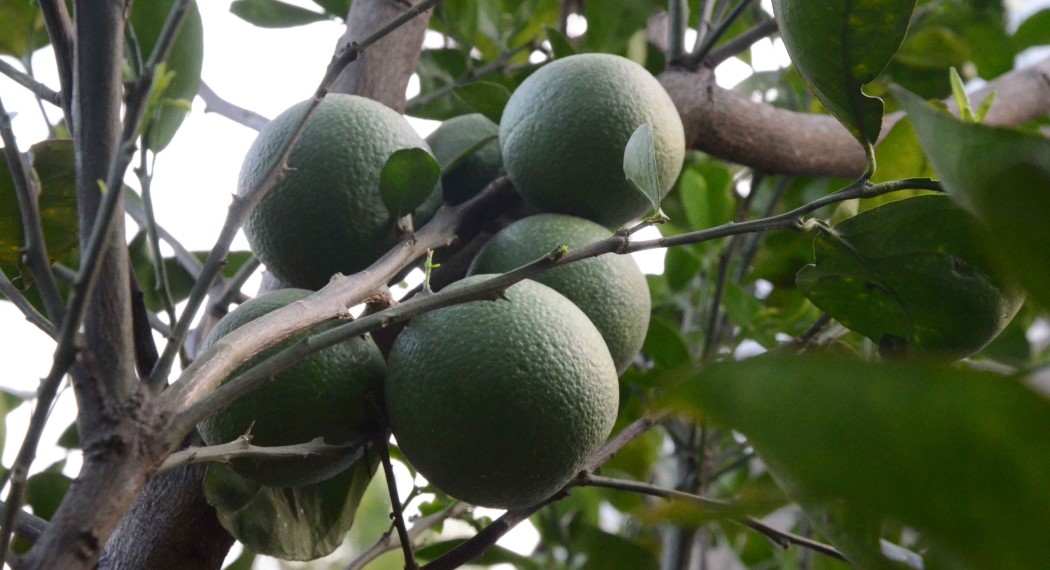
Citrus is a genus that includes various species of trees with significant economic and medicinal value. The most commonly known citrus species include orange, lime, mandarin, lemon, and grapefruit. In Sri Lanka, industry-based commercial cultivation of citrus is still underdeveloped even though the Citrus germplasm exists in abundance(8). Locally, citrus species are grown as a backyard plant and the dry and cool areas with higher elevation in the country are suitable for local citrus cultivation (9). Some of the locally grown citrus species include Citrus sinensis (domestically known as Pani Dodam) and Citrus crenatifolia, a tangerine locally known as Heen Naran, a species native to Sri Lanka.
The most important part of the citrus tree is its fruit, though other parts such as the leaves and the stems are also used for various purposes due to the high number of bioactive compounds they contain. The fruit is commonly used to make juices and as a flavour enhancer. It is added to the manifold home and commercial recipes. The zest is often used to make commercial essential oils and aroma compounds (10). In addition, citrus species are also used to treat various ailments in folk medicine. For example, lemon juice paired with honey is believed to aid weight loss, and lemon juice is used to treat UTI (Urinary Tract Infection) problems. Similarly, lemon juice mixed with olive oil is used to treat gallbladder stones and kidney stones (11).
Citrus fruits are full of fibres. Just one cup of orange contains four grams of fibre and this high fibre content brings various health benefits to consumers. For example, fibre improves digestive health, normalizes bowel movements, and aids weight loss. What is more, the fibres in citrus fruits include soluble fibre, which is the kind of fibre that lowers cholesterol levels, according to research (12).
Citrus fruits are chock full of folate, a water-soluble vitamin that helps in the production of DNA and ribonucleic acid (RNA) and mature red blood cells, which ultimately prevents anaemia. A 225 ml glass of orange juice provides 75 mcg of folic acid. To put it into perspective, in the United States, it is recommended that females and males consume 180 and 200 mcg of folate respectively. Further, the significantly high amount of vitamin C in citrus can increase the absorption of non-haem iron (which is the inorganic iron form found in plant foods) two- to fourfold, thereby preventing anaemia (13).
Citrus fruits contain a considerable number of limonoids, a significant phytochemical capable of inhibiting the formation of tumours. About 40 limonoids are found in citrus fruits, with limonin and nomilin being the major ones. These compounds occur in high concentrations in grapefruit and orange and are partially responsible for their somewhat bitter taste. They inhibit tumour formation by stimulating the enzyme glutathione S-transferase (GST) (14).
Source a Variety of Citrus Fruits from Sri Lanka >

Mangoes from Sri Lanka are known for their strong and tantalizing aroma, intense peel colouration, distinct taste, and high nutritional value. Driven by these factors, mango exports from Sri Lanka are embraced by a loyal customer base, and mango orchards in Sri Lanka cover about 26,000 ha of the whole land area. The total mango production is around 96,500 tons per annum. Around 10 types of mango varieties are commonly grown in Sri Lanka: Karutha Colomban, Willard, Vellai Colomban, Ambalavi, Chembatan, Malwana, Bettiamba, Giraamba, Peterpras, and Dampara. Out of these varieties, Karutha Colomban, Willard, Vellai Colomban, Ambalavi, and Malwana mangoes are native to Sri Lanka (15).
Each mango variety has a distinct taste and aroma; the agro-ecological region mangoes are grown in, is also a factor here. For instance, locally, mangoes are grown in three different regions (dry zone, wet zone, and intermediate zone) and mangoes grown in the dry zone have a unique taste, aroma, and colour, which fuel the increased consumer demand for them (15). Many locals prefer to consume these mangoes raw and unprocessed due to their delicious flavour. However, mangoes are processed for a range of products such as juice, puree, nectar, leather, pickles, ice cream, and canned slices as well.
Contrary to the common misconception that mangoes are unhealthy for those suffering from diabetes as they contain a high amount of sugar, no evidence suggests that the consumption of mango leads to diabetes or is harmful to people suffering from diabetes. Quite the opposite, certain studies have found that a higher intake of fresh mangoes leads to lowered blood sugar levels. For example, according to one study, consumption of 10 grams of freeze-dried mango for 12 weeks reduced the blood glucose levels of obese adults (16).
Research has found mangoes to be effective against several types of cancer. For example, in vitro findings suggest that mango “extracts and/or phytochemicals inhibit breast cancer cell growth, proliferation, migration, and invasion as well as trigger apoptosis and cell cycle arrest. (17)” In addition, research also suggests that mangoes help lower the risk of lung, colon, and prostate cancer as well.
Mangoes are packed with essential vitamins, minerals, and other micronutrients that boost your immune system and thereby promote overall health. For example, mangoes are a rich source of vitamin A, C, E, K, potassium, magnesium, riboflavin, and many more. Above all, 165 grams of mango contains 67% of the daily vitamin intake of vitamin C, thereby increasing iron absorption, preventing anaemia, and promoting cell growth.
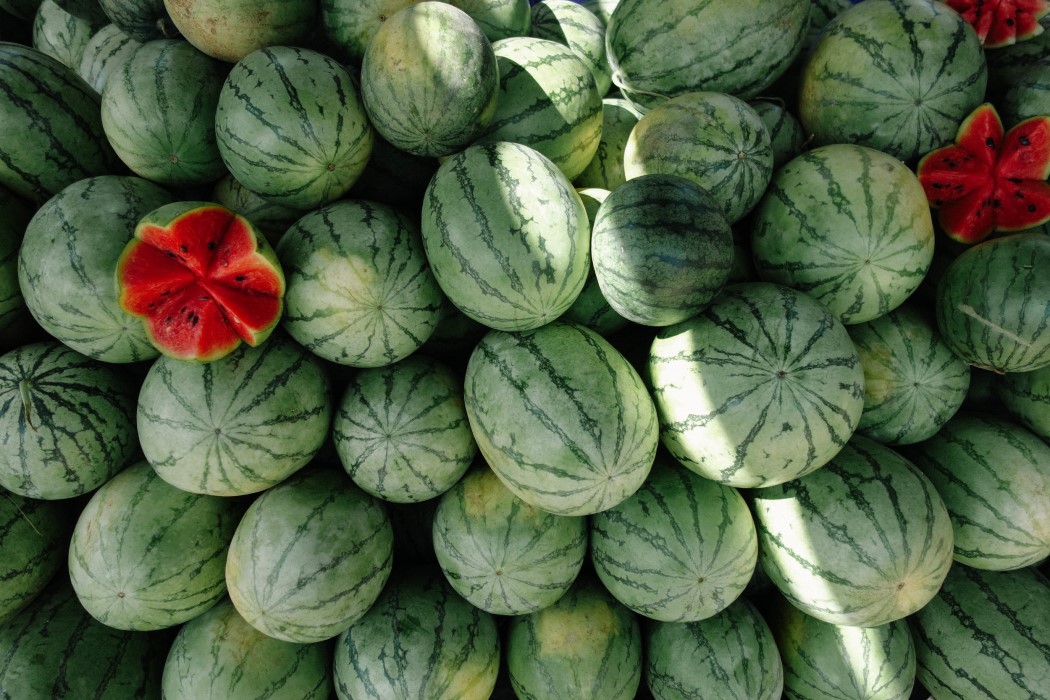
Watermelon is a warm, long-season crop that belongs to the family of Cucurbitaceae. It originated in Africa and is now grown in all tropical, subtropical, and arid regions of the world (18). In Sri Lanka, watermelon is primarily grown in dry and intermediate zones. The watermelon fruit grows up to 2-15 kg of weight and contains mostly water. It is in high demand in the dry zone of Sri Lanka, probably due to its ability to provide instant refreshment.
Watermelon is best known and consumed as a refreshing beverage. Chilled and served on a hot summer's day, it makes the perfect beverage that gives you a splash of freshness. When sliced or cut into chunks, it can be consumed as a healthy snack. If you have what it takes, you can also try spicy grilled watermelon. In addition, watermelon is processed for jams, sweets, and sauces as well.
Watermelon comprises 92% of water and is capable of keeping you hydrated. This is highly important as being hydrated is crucial to regulate body temperature, prevent infection, and ensure the proper function of organs. What is more, due to the increased water content of watermelon, it can make you feel fuller for a longer period, thereby reducing the amount of food you consume, which ultimately leads to weight loss.
Vitamin C is crucial to the human body. Thankfully, watermelon contains a significant amount of vitamin C; in fact, 100 grams of watermelon contains 3.72 grams of vitamin C and one cup of fresh fruit can provide 20% of the daily requirement of vitamin C. Therefore, the consumption of watermelon reduces the risk of vitamin C deficiency and related health conditions. Also, as an antioxidant, it is capable of protecting the oxidation of LDL and HDL, thereby preventing cell damage by free radicals (19).
Source Watermelon from Sri Lanka >
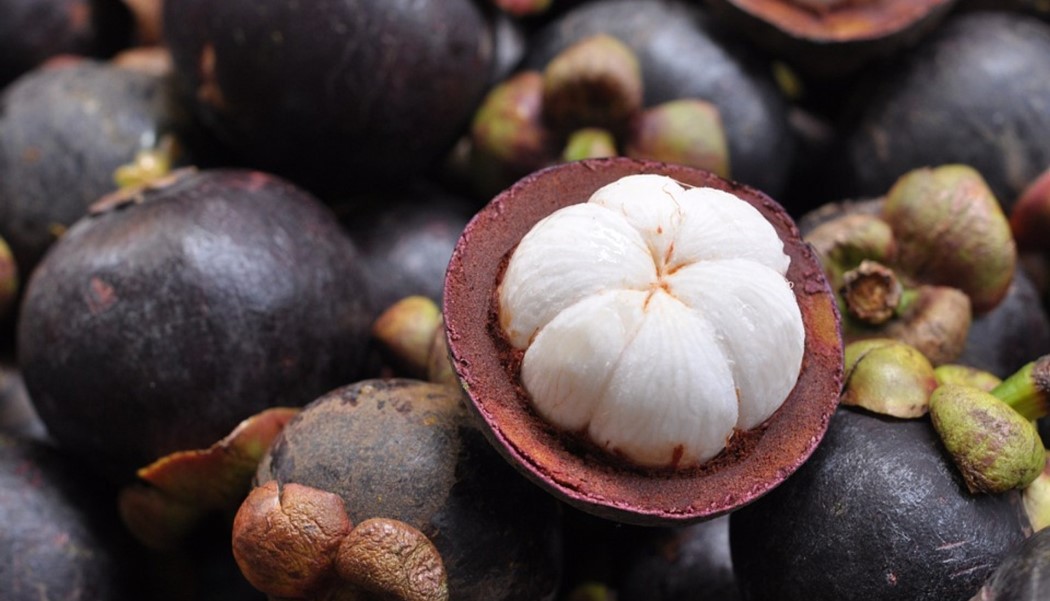
Mangosteen is known as the queen of fruits, due to its sweet, sour taste that stands out. It belongs to the family of Clusiaceae and is suggested to have originated from Southeast Asia. Mangosteen is known only as a cultivated species and can be found in Southeast Asian nations like Indonesia, Malaysia, Sri Lanka, the Philippines, and Thailand. The fruit of mangosteen may seem peculiar at first glance as it has a dark-purple or reddish rind and the white edible pulp inside it. Though it is a little curious-looking, its taste is tantalizing and you won’t be able to get enough of it!
Mangosteen has been consumed as a fruit for centuries by locals. It also has well-known uses in alternative systems of medicine where the fruit hull, the bark, and the roots are utilized to treat various ailments. For example, in China, India, Thailand, and other parts of Asia, the dried and powdered fruit hull is used as antimicrobial agents and antiparasitics in the treatment of dysentery. It is also used to treat wounds and chronic ulcers. Tea made from the fruit is used as a tonic for fatigue and low energy (20). In terms of traditional indigenous medicine across Southeast Asia, mangosteen is used to fight infections, heal wounds, and treat diarrhoea and related gastrointestinal conditions (21).
Studies suggest that mangosteen has antidiabetic activity. An α‐ amylase inhibitory effect was depicted in Garci Mangostin A, a new xanthone from the mangosteen pericarp extract, indicating that mangosteen can decrease postprandial glucose absorption, meaning that mangosteen effectively reduces the post-meal glucose absorption. Therefore, the consumption of mangosteen is beneficial for the treatment and prevention of diabetes (23).
The extract of the mangosteen fruit and xanthones extracted from its pericarp has displayed anticancer properties, meaning that they cause an antitumor effect in several types of cancers. It is reported that they are active in models of leukaemia and melanoma, colon, breast, lung, cervical, and prostate carcinomas cancer. Research has further found that their effects include the prevention of metastasis and angiogenesis (22).
Research has found that mangosteen extract is capable of reducing heart disease risk factors like bad cholesterol (LDL cholesterol) and triglycerides while increasing good cholesterols. Also, as mangosteen contains a significant amount of potassium, it can weed out the negative effects of excessive salt intake, thus increasing heart health by promoting normal heart rate and reducing the risk of coronary attacks (24).
Due to the country’s diverse climatic regions, Sri Lanka produces a wide variety of fruits, nuts, and vegetables. The manufacturing and exporting of more than 9000 tonnes of produce annually solidify Sri Lanka as a major exporter of fruits, nuts, and vegetables.